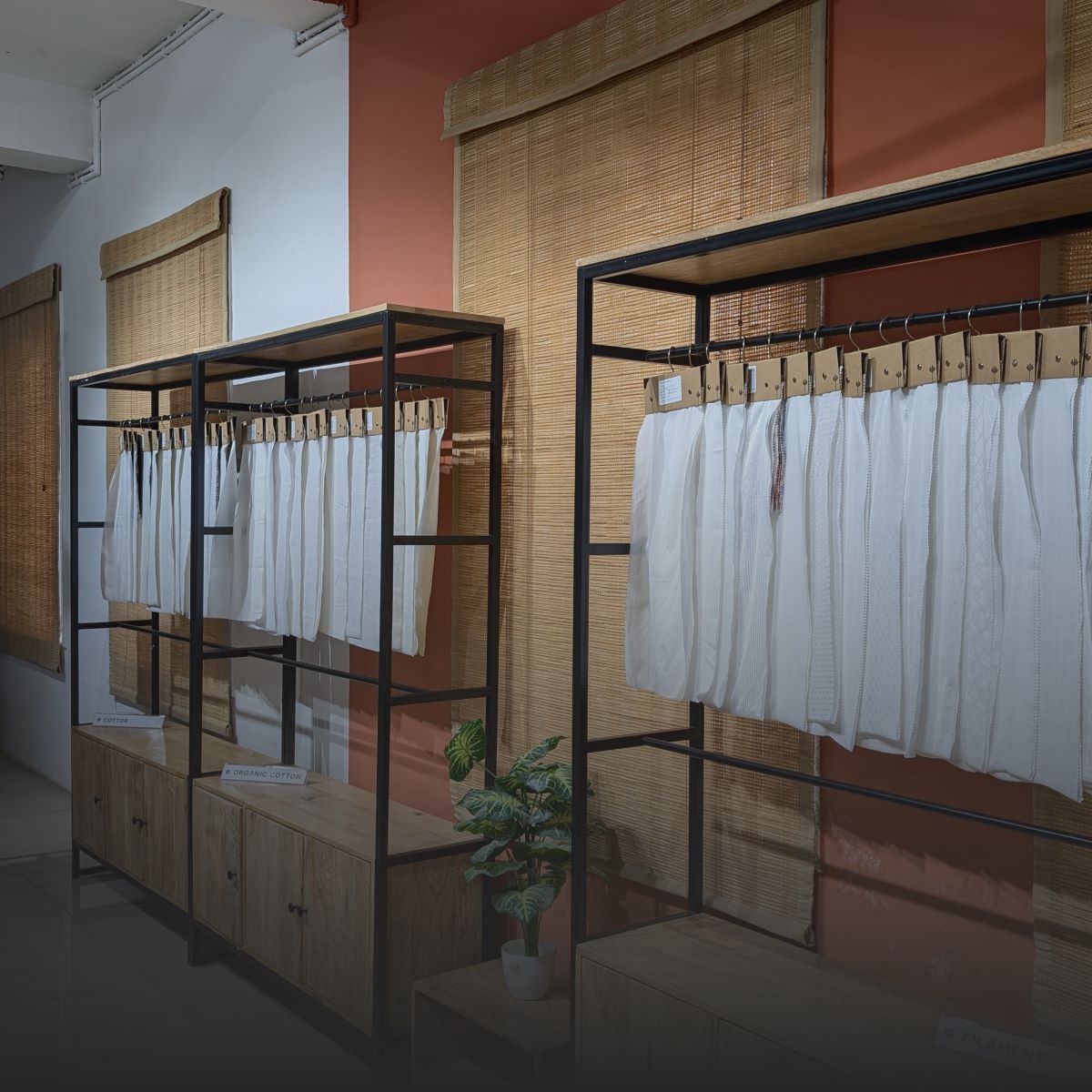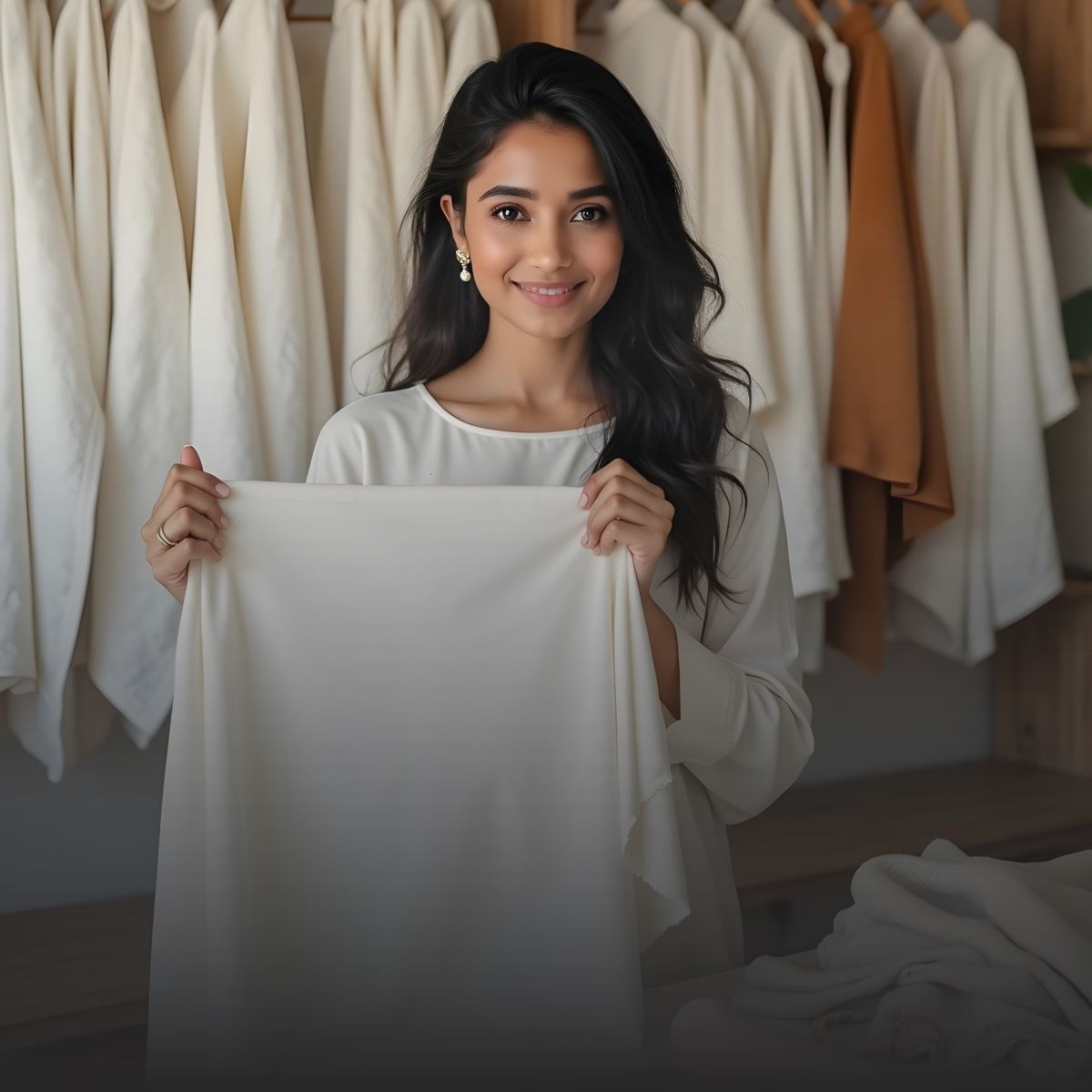You’ve designed your collection, picked out your fabrics and prepared to bring your ideas to life. But when you finally start sourcing the garments, problems appear. The fabric does not meet your expectations, the supplier misses the deadline or the minimum order quantity is too high for your needs.
This is a common experience in the fashion industry.
Take Raj, a D2C brand owner. He ordered garments from a supplier, but the wrong sizes arrived and delivery was delayed for weeks. Raj had to push back his launch date, costing him time and money.
Sourcing garments can be a major hurdle for your business. As a fashion designer, manufacturer or brand owner, you know how sourcing issues can throw off your plans and affect your reputation.
In this blog, we will look at five common garment sourcing challenges. You'll get practical solutions to help you overcome these problems and keep your production on track.
1. Garment Sourcing Quality Control Issues

What’s the Challenge?
Quality control problems are common when sourcing garments. These issues affect product quality and customer satisfaction.
Here are the common problems you may face:
-
Fabric Quality: Poor fabric can cause shrinkage, fading or pilling. This affects the garment’s look and durability.
-
Sewing Defects: Broken stitches, skipped stitches and uneven seams can damage the garment and make it less durable.
-
Color Inconsistencies: Mismatched or inconsistent colors can make the garment look off.
-
Sizing Issues: Incorrect sizing can result from poor stitching or fabric mix, leading to customer returns.
-
Print or Pattern Misalignment: Misaligned prints or patterns can make garments look poorly made.
- Garment Defects: Faulty zippers, loose buttons or uneven hems can make garments less functional and decrease quality.
How to Overcome This Challenge
To tackle quality issues, you need a solid plan:
-
Set Clear Standards: Define exact fabric, stitching and size requirements. This ensures consistency.
-
Choose Reliable Suppliers: Research suppliers to ensure they can meet your quality standards.
-
Inspect Throughout Production: Don’t wait until the end. Check materials, stitching and finishes at each stage.
-
Perform In-line Quality Control: Conduct quality checks during fabric cutting, sewing and assembly to catch issues early.
-
Listen to Customer Feedback: Pay attention to customer complaints about quality. Use this to fix problems in future batches.
- Certify Your Suppliers: Ensure suppliers meet industry standards through certifications and audits.
How Fabriclore Can Help
At Fabriclore, we make sure quality is never compromised. Our in-house inspection and testing unit analyzes over 20 types of defects and conducts shrinkage and color fastness tests for every order. This ensures that every fabric batch meets strict quality standards.
We provide a sample approval process so you can check the fabric quality before ordering in bulk. This helps you avoid mistakes and keep production on schedule.
2. Minimum Order Quantities (MOQs) and Production Flexibility in Garment Sourcing

What’s the Challenge?
Many businesses struggle with high minimum order quantities (MOQs) set by suppliers. If you're a small brand or a startup, ordering large quantities of garments can tie up your cash flow, waste resources and result in excess inventory.
For example, if your supplier requires a minimum order of 1,000 units but your needs are smaller, it can be a major obstacle. This is especially tricky for new brands or seasonal collections where you’re unsure of demand.
How to Overcome This Challenge
To navigate MOQ issues, you can:
-
Negotiate with Suppliers: Try negotiating for smaller MOQs or more flexibility in the quantities you can order.
-
Work with Flexible Suppliers: Look for suppliers who offer flexible MOQs, so you don’t have to order excessive amounts upfront.
- Order Samples: Always order samples first to check the product before placing a larger order.
How Fabriclore Can Help
At Fabriclore, we know high MOQs can be tough. That's why we offer a MOQ of 300 units, so you can order different garment types. This flexibility lets you try out different designs without ordering too many of one item.
With this approach, you can test your products in the market and only commit to what works without the risk of holding large amounts of excess inventory.
3. Sourcing from Multiple Suppliers

What’s the Challenge?
- Managing multiple suppliers can cause confusion and delays.
- Quality may vary between suppliers, making products inconsistent.
- Communication can be tricky, especially with different lead times and order processes.
How to Overcome This Challenge
-
Work with fewer suppliers: Stick to reliable partners who can handle multiple needs.
-
Build long-term relationships: A strong partnership means better consistency and fewer issues.
- Negotiate bulk deals: When possible, get multiple components from a single supplier.
How Fabriclore Helps
Fabriclore also provides a variety of fabrics and services in one place.
-
Competitive wholesale prices: Get better value for your money.
-
Custom designs and prints: Choose from thousands of designs or create your own.
- Printing services: Digital, screen and hand-block printing options.
This helps reduce the need for multiple suppliers, making sourcing simpler and more reliable.
4. Timely Delivery and Lead Time Issues

What’s the Challenge?
- Delays in delivery can push back production schedules.
- Missed deadlines impact product launches and sales.
- Unpredictable shipping delays are common in global supply chains.
How to Overcome This Challenge
-
Set clear delivery dates: Agree on lead times and hold suppliers accountable.
-
Add buffer time: Allow some flexibility to handle unforeseen delays.
- Stay in touch: Get regular updates from your suppliers.
How Fabriclore Helps
Fabriclore ensures timely delivery with reliable logistics.
-
On-time delivery: We meet your deadlines so you don’t miss launches.
-
Real-time tracking: You can track your orders every step of the way.
- Shipping Options:
-
India Shipping: Orders above INR 1999 get free shipping. For orders below that, a shipping fee of Rs. 199 applies. Expect delivery within up to 5 days.
- International Shipping: We ship globally with trusted carriers like DHL, ARAMAX, UPS and FedEx. Contact our support for more details on international shipping.
-
India Shipping: Orders above INR 1999 get free shipping. For orders below that, a shipping fee of Rs. 199 applies. Expect delivery within up to 5 days.
5. Understanding Fabric and Material Specifications

What’s the Challenge?
- Picking the wrong fabric can lead to poor-quality products.
- Fabric properties like durability, texture and stretch affect your design.
- Availability issues can throw off production if the fabric is discontinued or in short supply.
How to Overcome This Challenge
-
Know your fabric: Understand key fabric properties like weight, stretch and durability before choosing.
- Talk to your supplier: Regular communication ensures you get the right fabric.
How Fabriclore Helps
At Fabriclore, we make fabric sourcing simple and straightforward.
-
Expert Guidance: Our team supports you from idea to production, like an in-house team. With our fabric knowledge, you can trust your fabric choices.
-
Buy Swatches and Sample Yardage: Order swatches or sample yardage to test fabrics before making a full commitment.
-
Made-to-Order Fabrics: Get fabrics made to match your exact needs, whether it's a custom design or a specific material.
-
Fabric Types:
-
Printing & Dyeing: We offer a range of options, including digital printing, screen printing and hand block printing.
- Crafts of India: Explore unique fabrics, including traditional Indian textiles like Ajrak, Kalamkari and Bagh prints.
With Fabriclore, you get the support you need to choose the right fabrics and ensure they’re the perfect fit for your collection.
Conclusion
Garment sourcing comes with challenges, but solutions are within reach.
-
Quality control: Set clear standards and inspect materials throughout production.
-
MOQ flexibility: Work with suppliers who offer smaller order quantities.
-
Supplier management: Reduce confusion by working with fewer trusted suppliers.
- Timely delivery: Set deadlines and stay in close communication with suppliers.
- Fabric specs: Know your materials and test samples before committing.
Fabriclore helps you tackle these issues. With access to quality fabrics, flexible ordering and expert guidance, you can ensure smooth production.
FAQs
1. What is garment sourcing?
Garment sourcing is the process of finding, selecting and purchasing fabrics and materials for making clothing. It involves working with suppliers to acquire the textiles, trims and components needed for your designs. The aim is to get the right materials, at the right price and within the right timeline to produce your fashion collection.
2. What is the main challenge the fashion industry faces today?
The biggest challenge in the fashion industry today is sustainability. Consumers are demanding more eco-friendly practices. The industry is under pressure to reduce its environmental footprint and improve transparency. Fashion brands must address issues like waste, pollution and labor rights while maintaining profitability.
3. How can we improve the working conditions of garment workers?
To improve garment workers' conditions, brands and manufacturers can:
- Pay fair wages that cover workers' basic needs.
- Provide a safe and clean working environment.
- Ensure reasonable working hours and offer benefits like health insurance.
- Encourage transparency by working with certified ethical suppliers.
- Hold suppliers accountable for meeting labor standards.
These actions can improve workers' lives and lead to more ethical production processes.




